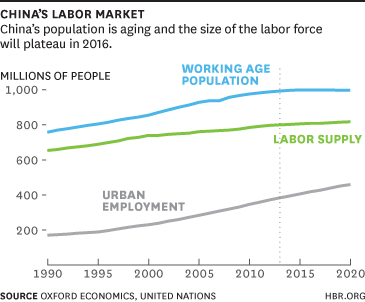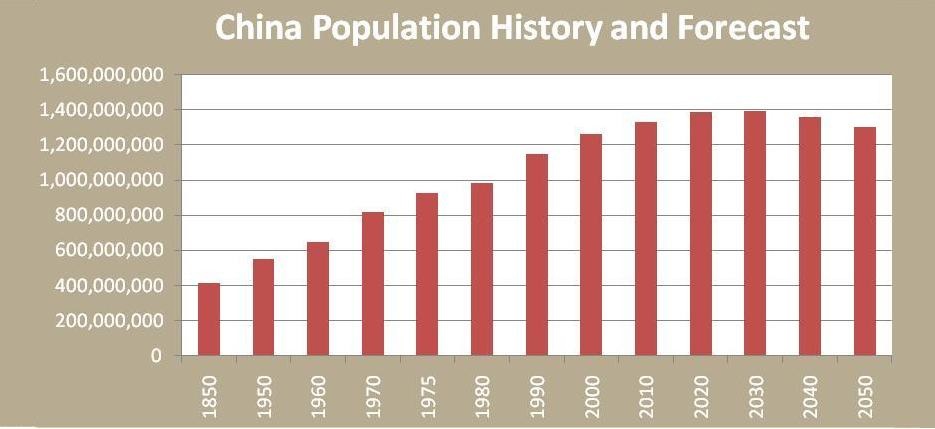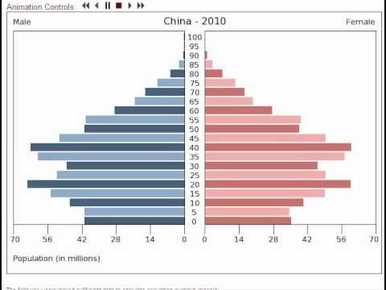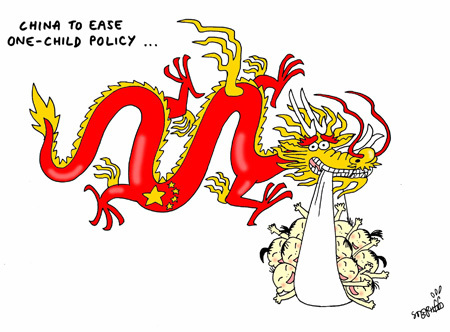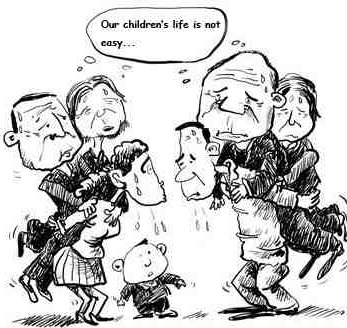population
Analyze these two charts and answer the questions in your handout.
|
Interactive Population Pyramid
Please go to http://populationpyramid.net/china/2045/ . Stop and answer interactive questions on your handout.. |
|
China's one-child policy
China was very concerned with the quickly growing population of their country. The communist party then came up with the one child policy. Below briefly outlines the policy.
|
Go to link for bigger image. Make sure to look at male vs. female population.
|
Bloomberg Video (Watch video and Answer questions)
Change in PolicyChina's top legislature has formally adopted a resolution easing the country's one-child policy. The Standing Committee of the National People's Congress passed a resolution allowing couples to have two children if either parent is an only child. The world's most populous nation, with 1.35 billion people, is moving to encourage more offspring, a significant revision to the communist government's strict system of birth control to counter a rapidly aging society and shrinking labor force.Instead of facing a massive fine or a forced abortion or sterilization that rule-breakers have risked over the three decades the policy has been in effect, a person might qualify for a $1,600 subsidy.
China saw a rare rise in births in 2014 — up 470,000 from 2013 — after allowing couples to have a second child if one of the parents was an only child. Previously, only couples who were both single children qualified to have two children. Rural couples can have a second child if the first one is a girl, because a son is preferred to work the land and to carry on the family name. China may consider tax credits or other financial incentives for people to have two children. Fines for couples who have more than one child vary widely, depending on location and income, but can range anywhere from a few thousand dollars to more than three times a couple's annual earnings. |
Factors other than the one-child policy, such as a lack of social security support, have also encouraged couples to limit their offspring. China is now believed to have a birth rate of just over 1.5 children per woman of child-bearing age - which is, in fact, higher than many of its regional neighbors, including Taiwan, Japan and South Korea. Niger has the world's highest birth rate per woman, with over seven, India has 2.55 and the US has 2.06. China introduced its one-child policy at the end of the 1970s to curb rapid population growth. But the policy has become increasingly unpopular and that leaders fear the country's ageing population will both reduce the labor pool and exacerbate elderly care issues.
By 2050, more than a quarter of the population will be over 65. The one-child policy has on the whole been strictly enforced, though some exceptions already exist, including for ethnic minorities.Previous reforms also permitted couples to have a second child where both were only children or, in the case of rural couples, where their first-born child was a girl. The traditional preference for boys has created a gender imbalance as some couples opt for sex-selective abortions. By the end of the decade, demographers say China will have 24 million "leftover men" who, because of China's gender imbalance, will not be able to find a wife. (Stop and answer questions)
By 2050, more than a quarter of the population will be over 65. The one-child policy has on the whole been strictly enforced, though some exceptions already exist, including for ethnic minorities.Previous reforms also permitted couples to have a second child where both were only children or, in the case of rural couples, where their first-born child was a girl. The traditional preference for boys has created a gender imbalance as some couples opt for sex-selective abortions. By the end of the decade, demographers say China will have 24 million "leftover men" who, because of China's gender imbalance, will not be able to find a wife. (Stop and answer questions)
globalizatioN & Economy
Resources (Information on website taken from websites below)
"China's Economy, in Six Charts." Harvard Business Review. N.p., 29 Nov. 2013. Web. 12 Apr. 2015. <https://hbr.org/2013/11/chinas-economy-in-six-charts/>.
"China Formally Eases One-child Policy." BBC News. N.p., n.d. Web. 12 Apr. 2015. <http://www.bbc.com/news/world-asia-china-25533339>.
"China's Economy, in Six Charts." Harvard Business Review. N.p., 29 Nov. 2013. Web. 12 Apr. 2015. <https://hbr.org/2013/11/chinas-economy-in-six-charts/>.
"China Formally Eases One-child Policy." BBC News. N.p., n.d. Web. 12 Apr. 2015. <http://www.bbc.com/news/world-asia-china-25533339>.
